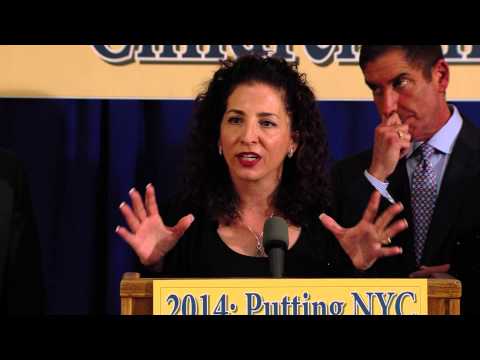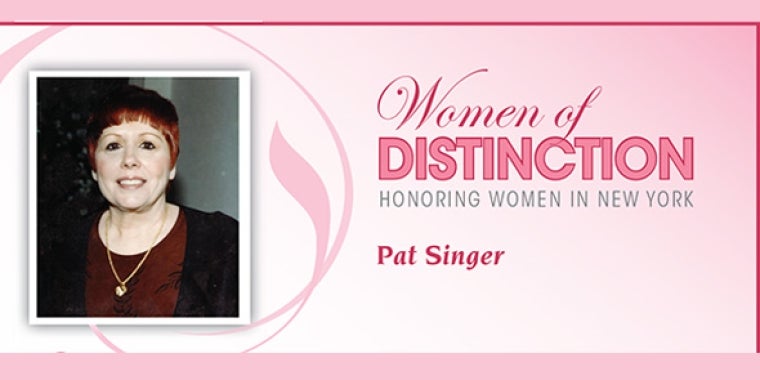“IF you’re in New York City and you want to learn about the rest of America, you should come look at Staten Island,” says Jonathan R. Peters, an associate professor of finance at the City University of New York’s College of Staten Island.
Staten Island is more dependent on private cars and private homes than its urban neighbors. It has a smaller share of the very rich and very poor than the rest of the city. While its homeownership rate is double that of the city as a whole — some 70 percent, versus 35 percent, according to 2006 census figures, the most recent data available — it is roughly the same as that of the nation as a whole.
A high level of homeownership used to signal a high level of stability. But Staten Island’s similarity to the broader United States holds true when it comes to the housing crisis as well, and foreclosures are on the rise in the borough.
“Initially, the impact of this was very, very heavily in minority neighborhoods,” said William Carbine, an assistant commissioner for neighborhood preservation at New York City’s Department of Housing Preservation and Development. “But it has since spread in a very big way into Staten Island. By Staten Island, I mean all of Staten Island.”
The city’s most suburban borough is also its least populated, with about 475,000 residents, compared with 1.6 million in Manhattan and 2.5 million in the most populous borough, Brooklyn, according to census data. So sheer numbers don’t represent the impact of Staten Island’s foreclosure problem.
According to PropertyShark.com, an online company that tracks real estate data, Staten Island has less than a quarter of the households that Queens does. The 45 homes that began foreclosure proceedings on Staten Island in April represent 0.027 percent of the total households. There were 193 that month in Queens, or 0.025 percent of the total.
By now, it is a grimly familiar tale.
Mary LaPointe, who has a son stationed in Iraq, bought her three-bedroom house in 2001. She paid about $250,000, and put no money down. She was making $40,000 a year as a waitress and had a blemished credit history. As the value of her house shot up a few years ago, she refinanced at least three times, pulling out cash while taking ever-larger mortgages.
She says she used the money to put her three children through private school and send one son to college. “This house worked for my kids,” she said.
Last year, she lost her job and by the time she found another one she had fallen behind on her mortgage payments. Now she has a $400,000 mortgage, but her house is worth less than that — by the end of 2007, the median price for a single-family home on Staten Island had fallen $12,000 since its peak three years ago, according to the Furman Center for Real Estate and Urban Policy at New York University.
With the help of the Neighborhood Housing Services of Staten Island, a nonprofit group, she asked her lender, IndyMac Bank, to work out a payment schedule.
IndyMac would not comment on Ms. LaPointe’s specific circumstances, but pointed to its sixfold increase in loan modifications in April over the same month last year. Recently, after months of back and forth, the parties worked out a modification of Ms. LaPointe’s loan. She will have a lower interest rate for three years while she works to improve her credit rating.
Ms. LaPointe was able to refinance into those larger mortgages because the value of her home shot up in recent years. Throughout Staten Island and the rest of the country, housing prices did the same. The median price for a single-family home in the borough rose to $427,000 at the peak of the housing market in 2005 from $224,000 in 1995, according to the Furman Center.
Wages, meanwhile, did not keep pace. According to the census, the median income for a household of four on Staten Island rose only $14,000 in the same period, to almost $62,300. Home buyers had to stretch their incomes to keep up with prices. Subprime loans, made to people with poor credit histories, and loans that required no proof of income or very little money down helped people reach further. Many people, it turns out, reached too far.
The North Shore of Staten Island, completed 113 foreclosure auctions in the first quarter, the second-highest number on a list of 56 areas in New York City, behind Jamaica, Queens, according to the housing department. The Mid-Island section was seventh, with the South Shore right behind it. Bedford-Stuyvesant in Brooklyn was No. 9.
Part of the reason for its high ranking is the proliferation of subprime and other risky loans. According to the Federal Reserve Bank of New York, of all the boroughs, Staten Island had the highest percentage at the end of 2007 of subprime mortgages and “Alt-A loans,” a kind of loan with minimal documentation requirements typically given to borrowers with tarnished credit histories. Five percent of its housing units have such loans, compared with 3.9 percent in Queens and 2.5 percent in Brooklyn.
“One thing I found odd was the lack of sympathy people had for homeowners in this situation,” said Diane J. Savino, a state senator who represents parts of Staten Island and Brooklyn. “People think, ‘I bought my house, and this would never happen to me.’ What people forget is that 20 years ago when you bought a house, they didn’t have subprime mortgages. The banking industry was a lot stricter.”
Often, subprime mortgages were given to people with credit problems. But, as Joseph E. Gyourko, a professor of real estate and finance at the Wharton School at the University of Pennsylvania pointed out, “there are a lot of middle-class people who have missed payments on things before.”
John and Dorothy Miele are an example. Two years ago, they wanted to refinance their home, which they inherited in the mid-1990s from Mrs. Miele’s mother. Mrs. Miele is a homemaker and Mr. Miele earns about $70,000 a year as an auto mechanic for the New York City Police Department. But their credit disqualified them from the sort of loan they wanted.
They refinanced anyway with an adjustable-rate mortgage, they say, because a mortgage broker told them that it was a step toward improving their credit and that in another six months he would give them a loan with better terms. After the papers were signed, the broker stopped returning their calls and the loan never materialized. Mr. and Mrs. Miele are now in a much tighter spot than they were before they refinanced. Nine people, including their children and grandchildren, depend on that house as a place to live.
The bank that gave them their loan, First Franklin, has since sold it — a standard practice in recent years. Now, it is part of a mortgage-backed security sold by Deutsche Bank to investors. The Mieles, who are about a year behind on their payments, are fighting foreclosure in court. Their next court date is in July.
Deutsche Bank, which acts as trustee, said in a statement: “The trustee is not responsible for foreclosures or selling foreclosed property. Such decisions are made exclusively by the servicing companies.” The servicer attached to the Mieles’ loan, Specialized Loan Servicing, would not comment.
When thousands of people own a small piece of a home loan, it’s unclear who has the authority to make decisions about the mortgage when it comes to things like working out payments.
Thomas Cunsolo has been going back and forth with his bank for four years. When Mr. Cunsolo refinanced six years ago to consolidate bills, he was a union carpenter making up to $80,000 a year. Two years later, two decades of work in heavy construction caught up with him. After two knee surgeries and ongoing battles with a host of other ailments, Mr. Cunsolo lost his job.
While waiting for his disability benefits to kick in, he fell behind on his payments. He contacted his lender, Guaranty Bank. He said he thought the parties had arranged a payment plan. He paid a lump sum of $10,000 and sent checks of $2,300 every month for four years.
This year, he received a letter saying that his next payment due was for some $41,000. Now it is unclear to him what sort of payment plan he agreed to —and what he signed at the closing. A representative of Guaranty Bank would not comment.
Margaret Becker, the director of the Homeowner Defense Project at Staten Island Legal Services, has been helping Mr. Cunsolo. “He can afford to keep the house; he’s been making payments for years,” Ms. Becker said. “It should be easy to fix, the problem is getting through the layers of servicing and ownership to somebody who’s able to make the real decisions about modifying the loans.”
Some homeowners like Diana Wilson-Ballard have found success renegotiating their mortgages.
Three years ago, Ms. Wilson-Ballard, a public school teacher, and her husband, Forest Ballard, a retired Verizon technician, bought a $500,000 house for about $20,000 down.
“We were told that interest-only loans were the best thing going,” she said. “Well, you know from nothing, and you hear that this way you can get in with little money down and then, in a few years, you can refinance. Who wouldn’t want that?”
This fall, Ms. Wilson-Ballard took time off from work because she was having heart problems. She and her husband fell behind on their mortgage payments — even before their adjustable rate reset. After months of telephone calls and negotiations, and with the help of a member of Senator Savino’s staff, Ana Tinsly, the couple were able to consolidate their loans.
A representative of their bank, Wells Fargo, said in an e-mail message, “The result is she can remain in her home, and Wells Fargo and the investor who owns the loan avoid the cost of going through foreclosure — a win for everyone involved.”




